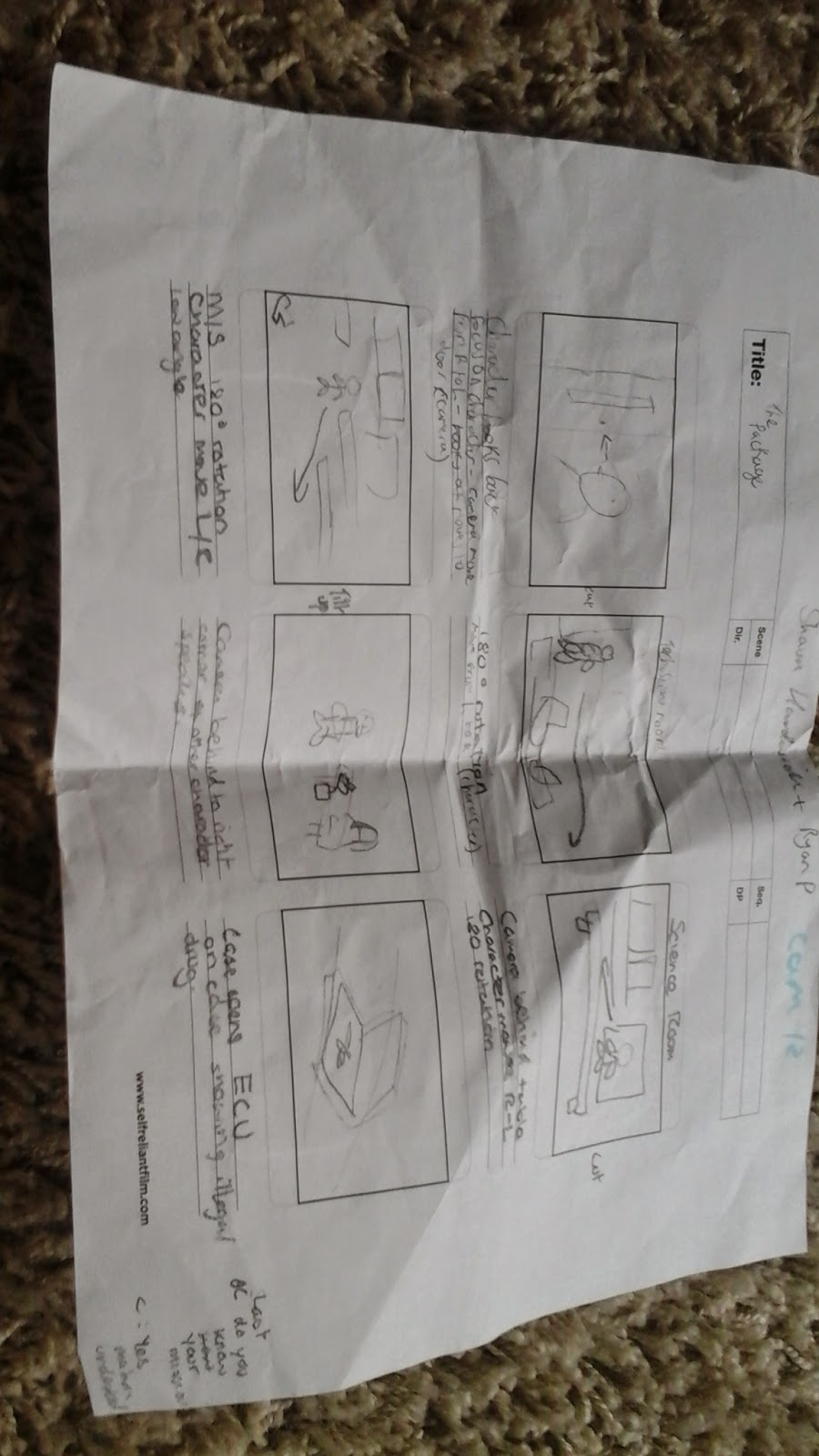During the filming and editing process I have learned many new things. One example of this is now I know how to edit films to great detail in Adobe Premiere Pro and how to create a piece of music on Mixcraft 5 to add on to our film and adding this on to Premiere Pro. We manage to film our whole piece in two weeks and edited for two weeks. Altogether the filming and editing process took one month to do. The storyboard process took two lessons to complete with our ideas on camera angles and how the characters were dressed. One issue with continuity was in one scene where the sunglasses on Shaun changed as his glasses broke.
2- Area's of success
My area's of success during the preliminary task was filming as I was on camera, filming the different scenes with Shaun. The success I achieved with the planning stage was when I suggested several locations where we could film. We filmed at the entrance to Tupton Hall School, The corridors of the school and in a science classroom at the school. I was successful with my editing techniques on the editing process with cutting long shots and shortening them so we could reach our recommended time for the length of the film.
3-Area's for development
if I do a film opening sequence project again in media then I would improve on certain techniques, One of these is to improve on my camera skills as the camera was not very steady during some parts of the opening scene. some other improvements involved editing as the footage was not cut very well and that next time I would need to improve on how to add sound i.e. dialogue as we could not retrieve the sound during the first week of editing.
4- How well did I meet the brief
With this preliminary work we did follow the rule of 180 degree rule as we used this when Shaun walked down the drive way and he stopped, thin I went around Shaun to show what he was looking at. We used Shot/Reverse shot when there was the dialogue between Shaun and me. Every time we said our line the camera focused on the other person. We also used Match on action during the filming when Shaun looked over the car park and the camera focused on what Shaun was looking at.
5- Feedback from others
Amber's group.
3 positive things about our film:
- They liked how we used specific camera techniques
- They loved our music and how we composed it in Mixcraft
- They liked our plot overall and how the opening builds up tension.
- Make the film a little shorter, cut some of the parts where Shaun is walking
- Next time make sure that the camera is more steady and more accurate at where the camera is pointing
- Try not to change props part way through as they saw our change in the glasses
During the preliminary task I filmed the whole film, helped plan our locations, shots and camera angles, sorted out props and helped with editing. The skills I have gained during this task was new skills on editing and filming which I can use for future tasks. Me and Shaun did work well together as we helped each other out when working on specific jobs such as the script writing. We also helped each other out with editing.
Overall the preliminary task to me was a success. Thanks to Shaun Hardwick.
The film is on YouTube - https://www.youtube.com/watch?v=rWdkmMXqfp4&list=UUht5fxUjha19_XNfG0mi2EA












